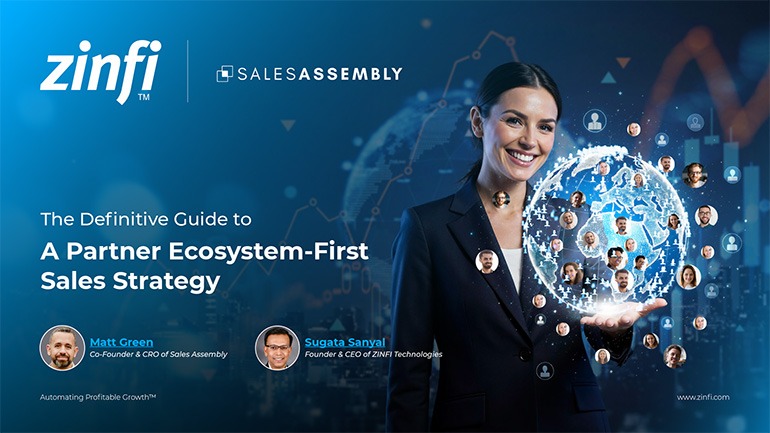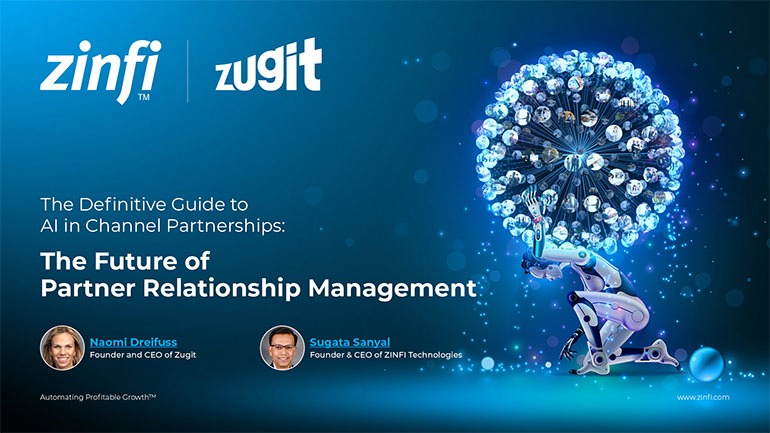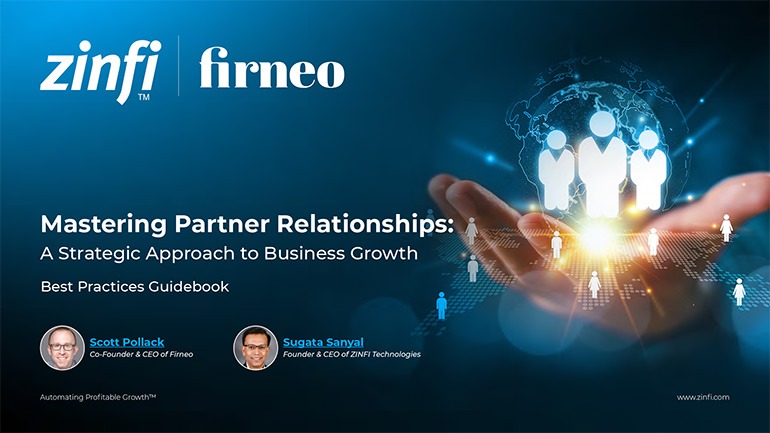Best Practices Articles

Why Channel Partners Don’t Use Market Development Funds (MDF)
Most vendors that are selling through the channel depend on their partners to generate demand instead of just relying on leads generated by the vendors. However, the sad reality is that the channel often remains as a fulfillment arm. Despite heavy investments that many vendors have made in channel marketing—particularly in automation and concierge services—most partners do not use marketing development funds (MDF). In fact, our worldwide channel survey data shows as much as 60% of market development funds (MDF) are not used on a quarterly basis. In this article we explore the key reasons why.
Before we delve into the issues, however, let’s spend a few minutes on the 40% of the cases where market development funds are claimed and used. In the majority of these cases, the funds are used by large partners who know how to navigate the MDF approval process and have a much larger bucket of funds. These tend to be large channel partners who have deep relationships with the vendors and have competencies in place to market, sell and fulfill demand. Also, these large channel partners usually have dedicated marketing resources in place to apply for funds and utilize them properly. While corruption tied to misuse of market development funds remains a major issue in the channel, with proper auditing and personnel management organizations can ensure that funds are being used appropriately. This part is not easy, but is highly necessary.
Now let’s take a look at the 60% of the cases where funds are not being claimed or used. Why is this the case? Market development funds (MDF) are available primarily for partners who have achieved a certain level of sales output. And this assumes that such partners have developed specific competencies in selling products and services for which market development funds (MDF) have been provided. However, as we noted earlier, most of the time these funds remain unused. Based on our research we have discovered a set of core barriers that prevent market development funds (MDF) from being claimed and used.
- Partners are not focused on selling vendors’ products. Most of the time partners sell a vendor’s product as an alternative to the core solution or as an add-on. This scenario is quite common in banking, insurance, finance, technology and many other sectors where partners (agents, resellers, brokers, etc.) typically represent multiple vendors in order to provide choices to their client base. This lack of primary engagement leads to partners focusing on marketing the primary solution, but skipping any marketing activities for the add-ons as a standalone initiative. In most of these cases, partners do not apply or claim for market development funds (MDF).
- Partners tend to focus on the short term. Most channel partners who generate less than $5 million to $10 million in annual revenue and lack dedicated marketing resources tend to focus their business activities on quarterly intervals. However, we know that effective marketing is not just about running events; it’s about putting together a comprehensive, 360-degree approach tied to inbound and outbound activities over the long term. The focus on quarterly initiatives can cause partners to bypass a structured approach to marketing, thus failing to apply for market development funds (MDF).
- Partners do not have digital marketing expertise. Marketing has changed dramatically during the past 10 years and even more so over the past five years. In the past, B2B marketing relied heavily on telemarketing and lead generation, and B2C marketing depended heavily on advertising. However, both marketing approaches have changed—primarily due to the evolution of social media, content marketing and social selling activities. In spite of the changes, most partners are not equipped properly with the appropriate tools and techniques to exploit the advantages of digital marketing. Instead, many partners tend to rely on old techniques, like telemarketing and running events, and overlook the value of using market development funds (MDF).
- Partners do not have marketing resources. It’s a well-known secret that most channel partners do not have dedicated marketing resources; that’s one reason why they are sometimes called resellers vs. remarketers. As a result, most channel partners are not aware of market development funds (MDF) requirements, don’t know how to apply for them and end up not using them even when they are available.
- Vendors do not provide marketing tools and concierge services. While the first four barriers have been tied to partners’ business models and competencies, this last barrier relates directly to vendors’ shortcomings. Many vendors are reluctant to invest in a marketing automation platform that works for channel partners and offer marketing concierge services. It is essential today to give channel partners pre-configured campaigns that are pre-loaded in a channel marketing automation platform. However, that alone is not enough. Since many partners do not have dedicated marketing resources, it is also essential to provide marketing concierge services (for free) in “bite sizes” to those partners who are trying to grow their business but struggling due to lack of internal marketing resources.
As you can see, there is no lack of reasons why a significant portion of vendors’ market development funds (MDF) go unused every quarter. Vendors can address this problem by taking four key steps:
- Focus on partners who are using funds. It is essential to provide partners who are engaged and know how to apply for funds and get paid with dedicated marketing services agency capabilities so that partners can quickly apply for funds and execute campaigns that are aligned with the vendor’s business objectives. This step can add deep value to channel partners.
- Eliminate channel corruption. While this seems like an obvious point in today’s business environment, companies still tend to shy away from addressing this issue. In fact, they often know which partners are misusing funds but don’t want to ruffle any feathers. Unfortunately, in some case channel management is also involved in the misuse of funds. This is where regional or corporate management needs to step in and clean up the system by bringing in transparency, weeding out corrupt people and partners, and engaging in a public discussion about why it is essential to use funds properly.
- Provide channel marketing automation. We have discussed earlier that campaigns need to be pre-loaded into a channel marketing automation platform so partners can quickly search for, select and execute campaigns. The platform needs to be robust enough to provide content in local languages, and it should make it easy for assets to be customized, co-branded and downloaded for execution. Furthermore, the platform should provide native execution capability, so that partners who want to launch a campaign should be able to do so themselves directly from the platform. We have seen a consistent pattern in which, once a robust platform has been adopted, the pick-up rate for market development funds (MDF) goes up substantially.
- Provide marketing concierge services. Since many partners do not have dedicated marketing resources, they need to be supported by dedicated concierge services—in much the same way direct sales forces need support from marketing teams and indirect sales forces (AKA the channel). While we have written a lot on this topic, there is much more that needs to be discussed. However, the primary focus of concierge services should be in understanding the partner’s business and recommending what will truly work for them. Once this relationship has been established, utilization of market development funds (MDF) will go up.
As you can see, it can be hard to get partners to use market development funds (MDF), but if vendors provide the proper structure and focus this can be achieved. However, channel corruption associated with fund management must first be addressed by senior management. Vendors who have a clear business objective and purpose and have proper resources and channel marketing automation in place are not only likely to see fund utilization rise, but they will also find the return on their channel marketing investments can scale up quite substantially.
Best Practices Guidebook
 Definitive Guide to a Partner Ecosystem-First Sales Strategy
Definitive Guide to a Partner Ecosystem-First Sales StrategyDownload for FREE
 The Partner-Led Digital and AI Transformation Best Practices
The Partner-Led Digital and AI Transformation Best PracticesDownload for FREE
 Startup Talent Recruitment: Hiring Missionaries, Not Mercenaries
Startup Talent Recruitment: Hiring Missionaries, Not MercenariesDownload for FREE
 The Future of Partner Relationship Management with AI in Partnerships
The Future of Partner Relationship Management with AI in PartnershipsDownload for FREE
 Cybersecurity for the 99%: Strategies from the Frontline
Cybersecurity for the 99%: Strategies from the FrontlineDownload for FREE
 Mastering Partner Relationships: A Strategic Approach to Business Growth
Mastering Partner Relationships: A Strategic Approach to Business GrowthDownload for FREE
 The Smart Manufacturing Playbook: Industry 4.0 Transformation
The Smart Manufacturing Playbook: Industry 4.0 TransformationDownload for FREE
 Mastering Partner Relationship Management: Keys to SaaS Channel Success
Mastering Partner Relationship Management: Keys to SaaS Channel SuccessDownload for FREE
 Navigating the AI Revolution: Guide for Partners in the Microsoft Ecosystem
Navigating the AI Revolution: Guide for Partners in the Microsoft EcosystemDownload for FREE
 Mastering the Modern Buyers Journey: Sales Leader’s Guide to AI & Engagement
Mastering the Modern Buyers Journey: Sales Leader’s Guide to AI & EngagementDownload for FREE
 Hybrid Cloud and Edge AI Computing Impacting the Future of PRM
Hybrid Cloud and Edge AI Computing Impacting the Future of PRMDownload for FREE












